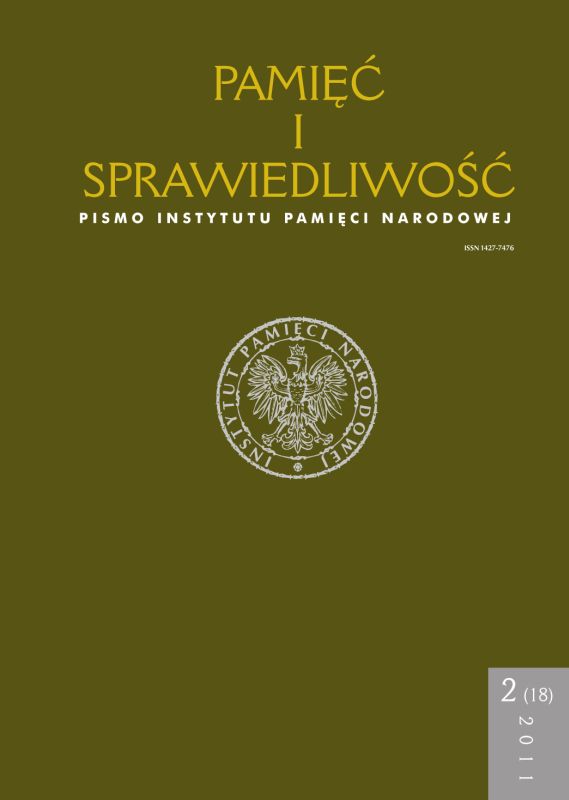Plastyczne i przestrzenne formy upamiętnienia ofiar byłego KL Lublin na terenie Państwowego Muzeum na Majdanku w latach 1944–1969
Pamięć i Sprawiedliwość, Tom 18 Nr 2 (2011), strony: 299-320
Data publikacji: 2011-12-30
Abstrakt
Bibliografia
T. Kranz, Zagłada Żydów w obozie koncentracyjnym na Majdanku, Lublin 2007 S. Kania, Proces zbrodniarzy z Majdanka, Warszawa 1987 I. Grzesiuk-Olszewska, Polska rzeźba pomnikowa 1945–1995, Warszawa 1995 Z. Mazur, Upamiętnienie w latach 1945–1948 ofiar niemieckiej okupacji, „Przegląd Zachodni” 2004, nr 4 , s. 148 R. Traba, Symbole pamięci: II wojna światowa w świadomości zbiorowej Polaków [w:] idem, Kraina tysiąca granic. Szkic o historii i pamięci, Olsztyn 2003, s. 181-188 J. Adamska, Pamięć i miejsca pamięci w Polsce po II wojnie światowej, „Przeszłość i Pamięć” 1998, nr 1, s. 5–6 A. Górny, Z historii Rady [w:] Pamięć wiecznie żywa. 40 lat działalności Rady Ochrony Pomników Walki i Męczeństwa, Warszawa 1988, s. 5 Z. Wóycicka, Przerwana żałoba. Polskie spory wokół pamięci nazistowskich obozów koncentracyjnych i zagłady 1944–1950, Warszawa 2009 J. Kwiatkowski, 485 dni na Majdanku, Lublin 1966 J. Jaworska, „Nie wszystek umrę...”. Twórczość plastyczna Polaków w hitlerowskich więzieniach i obozach koncentracyjnych, Warszawa 1975 H. Kurcyuszowa, Komando dziecięce [w:] Przeżyli Majdanek, wybór i opracowanie A. Wiśniewska, C. Rajca, Lublin 1980 r., s. 54–57 J. Kiełboń, E. Balawejder, Państwowe Muzeum na Majdanku w latach 1944–1947, Lublin 2004 E. Dziadosz, E. Gryń, Państwowe Muzeum na Majdanku w latach 1944–1963, „Zeszyty Majdanka” 1965, t. 1 , s. 182 E. Dziadosz, Z 25-letniej działalności Państwowego Muzeum na Majdanku, „Zeszyty Majdanka” 1969, t. 4 , s. 341 E. Gryń, Państwowe Muzeum na Majdanku. Spojrzenie wstecz i dzień dzisiejszy, „Muzea Walki” 1970, t. 3 , s. 96 R. Dunin, J. Marszałek, Działalność Towarzystwa Opieki nad Majdankiem w latach 1957–1968, „Zeszyty Majdanka” 1969, t. 4, s. 354 D. Olesiuk, K. Kokowicz, Katalog wystawy „Jeśli ludzie zamilkną, głazy wołać będą...” Pomnik ku czci ofiar Majdanka, Lublin 2009 R. Dunin, R. Czesław, Uroczystość odsłonięcia pomnika na Majdanku, „Zeszyty Majdanka” 1971, t. 5, s. 279- 281
 Język Polski
Język Polski
 English
English
 Deutsch
Deutsch
 Français (France)
Français (France)
 Italiano
Italiano
 Русский
Русский


 PDF
PDF
